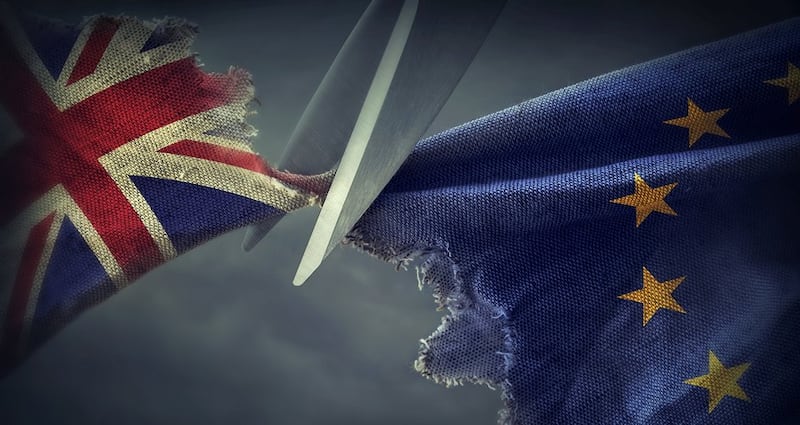Why is the Irish Border backstop now back centre stage in the Brexit debate?
The backstop is the plan to avoid a hard Irish Border if no other way is found to do so during future trade talks between the EU and the UK. It is more than just a commitment by both sides to do this – central to the backstop is a detailed technical plan to keep the Border open.
The backstop is now central to the debate for two reasons. First, the EU continues to insist the UK signs up to the backstop plan as a central element of the withdrawal agreement, the mechanism for an agreed and phased Brexit.

However the UK House of Commons has repeatedly voted down the current withdrawal agreement, and Boris Johnson now says he wants to "bin the backstop".
Second, there is a lot of debate about how the Irish Border might operate if there was a no-deal Brexit – in other words if the UK left without concluding a withdrawal agreement.
The Irish Government says the UK must still stick to something like the backstop plan to avoid a hard Border, given its commitments under the Belfast Agreement. However, what the UK would do is not clear at all.
How would the backstop work?
If the UK signed the withdrawal agreement, talks would immediately start about how trade between the UK and EU would be managed in future. The backstop would only come into play if these talks did not come up with a future trade plan that would itself keep the Irish Border free of checks.
The terms of the backstop stipulate all of the UK would keep its basic customs regime aligned to the EU – meaning no tariffs, or special import taxes, on goods moving between the two markets. Northern Ireland would remain fully aligned with the EU customs regime and would also keep the same regulations in areas like animal and food health, as set down in the EU single market rules.
This would mean no checks would be needed at the Irish Border, as the customs and regulatory regimes would be the same, North and South. It would also mean only limited additional checks would be needed on goods entering the North from Britain.
So what’s the problem?
Where would you like to start? The DUP are opposed to this because it says that a different regime would apply in the North compared to the rest of the UK. The North would also be applying EU rules in some areas while having no input into how these are formed.
In the UK, the Brexit lobby says the backstop could see the UK “trapped” in a customs union with the EU in the long term. This would severely limit the UK’s ability to do trade deals with other countries, such as the United States, because the UK would remain bound by many EU rules.
Is there a solution?
Not unless somebody is prepared to compromise – and even then it is not clear whether Boris Johnson, as the new prime minister, wants to try to find a deal. There had been suggestions of some time limit to the backstop, or some mechanism to allow the UK to escape after a period, though Johnson has said that even this would not be enough.The Irish Government has said this would undermine the whole point of the backstop as an enduring guarantee.
Johnson has said he believes other arrangements, like the use of technology and advanced processes, could avoid the need for Irish Border checks after Brexit. These could help, but some intractable problems remain, and there is no alternative solution likely to emerge over the next few years.
Some way needs to be found to undertake the necessary customs, product origin and VAT checks to ensure compliance. And checks on animals and food entering the Republic from the North are essential to ensure food and animal safety. The EU side will insist these checks are done, as the Border will be an entry point to the single market,
So there is no quick compromise available here. There has been speculation the backstop plan might be pared back – perhaps just to cover the North, as we originally planned – but this would be even worse from the DUP’s viewpoint.
And if there is a no-deal exit?
The Irish Government has said the UK should be expected to do whatever is necessary to avoid a hard Irish Border even in a no-deal.
But here we come to the thorny issue of how to define a hard Border – and the uncertainty about how a Johnson-led government would do. It is also unclear whether talks might restart between the EU and UK shortly after a no-deal, potentially bringing the Border issue back to the table – or whether a long stand-off might ensue.
Leaving the EU is an horrendously complicated business, and nowhere illustrates this better than the Irish Border.










